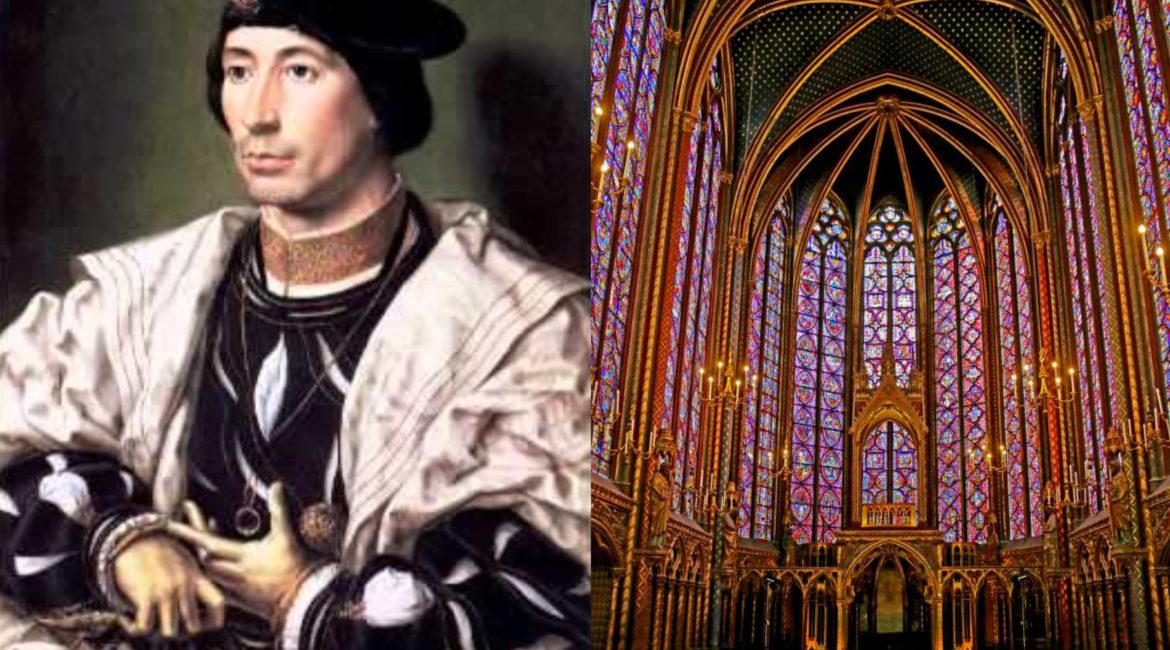Claudin de Sermisy (born circa 1490) passed away on the 13th of October 1562. Together with Clément Janequin, his friend and also rival for the affections of the art-loving King François I of France and for his popularity, he was one of the most important and famed composers of French chansons in the High Renaissance era in the first half of the 16th century. Sermisy also composed sacred music which both influenced and was influenced by Flemish and Italian styles.

We know little about his early life. Sermisy could have studied with Josquin des Prez, if we choose to believe the Memoirs of Pierre Ronsard (a famous French poet whom his own generation in France called a ‘prince of poets’). Anyway, Sermisy was well acquainted with Josquin’s music. According to contemporary sources, the young man was singing the Royal Chapel in 1505-1508, praised by both King Louis XII of France and his wife, Anne de Bretagne (Anne of Brittany).
After Louis XII’s death in 1515, Claudine de Sermisy became patronized by King François I of France, and the young monarch took him to the Duchy of Milan, where François won the Battle of Marignano of 1515. In 1520, Claudine de Sermisy also contributed to the grand musical pageant and festivities during the extravagant Field of the Cloth of Gold, although on the French part the project was ruled by Jean Mouton (a French composer of the Renaissance notable for his motets). Sermisy worked as a singer in Calais and deserved praises from both King François I of France and King Henry VIII of England. Sermisy composed some special chansons for this event. Years later, Sermisy composed a ceremonial motet and performed a chanson during the meetings of these two monarchs in Calais, where Henry VIII with Anne Boleyn in October 1532.

Claudine was a friend to King François, and he was also loved by the monarch’s relatives – Louise de Savoy, the Queen Mother, and Queen Marguerite of Navarre, the king’s sister. By 1532, Sermisy was music director of the Royal Chapel, which position he obtained thanks to his talents and François’ friendly attitude to him. At this post, Sermisy’s responsibility was to teach and care for the boys of the choir, as well as recruit talented singers and groom them for a musical career. In 1533, he was also appointed a canon of the Sainte-Chapelle and moved to Paris, where he rented a large and comfortable mansion. Already after François I’s death, Sermisy gained a prebend at Ste Catherine in Troyes. Little information is available about Sermisy’s life in the 1550s, but he was active as a composer until his death, given the number of his published works in these years.
Sermisy composed both sacred and secular music, and each of his works was for voices. Of his sacred music, 12 complete Masses have survived, including a famous Requiem mass, as well as approximately 100 motets, which François I and Marguerite de Navarre often listened to as they summoned Sermisy to the king’s private chambers to play for them until the composer’s move to Paris. There are also some magnificats: the Magnificat is a common part of Christian worship, for instance traditionally included in vespers, evensong, or matins. Sermisy’s set of Lamentations was performed by his followers during the funeral of King François in 1547 and the funeral of King Henri II in 1559. Unlike many of his contemporaries, Sermisy was a staunch Catholic and was never interested in religious reform, so all of his religious projects were purely Catholic.
The older Sermisy was getting, the more interested he was in sacred music instead of secular one. So, his appointment in the Sainte-Chapelle was suitable to his evolving character and tastes. Sermisy composed 2 of the few polyphonic settings of the Passion, which we can find in French music of the time, and the musical setting is simple and easy to understand, compared to his Masses and motets. Sermisy’s settings appeared in the 10th volume of Motets, which was published by Pierre Attaignant. Sermisy’s output of chansons was tremendous: he wrote more than 200 chansons in total, but now we have about 175 of them. The texts Sermisy chose were from contemporary poets, especially Clément Marot, who was Sermisy’s friend. Sermisy actively used verses by Marot for his musical projects, making him the main supplier of poems for his chansons. The main topics included unrequited love, friendship, nature, merrymaking, and drinking.
Let’s consider one of Claudine de Sermisy’s short secular works in modern French:
J’aime le cœur de mon amie,
sa bonté et sa douceur.
Je l’aime sans infamie
et comme un frère sa sœur.
Une amitié démesurée
n’est jamais bien assurée
et met le cœur en tourment.
Je veux aimer autrement.
In English translation, this gorgeous chanson will be:
I love my friend’s heart,
His kindness and gentleness.
I love her without infamy
And like a brother his sister.
A disproportionate friendship
Is never well assured
And torment the heart.
I want to love differently.

It is written in a light, easily understandable style, and is performed in one anguished voice as the singer craves to have not only the love of a friend, but also the love of some great lady. Sermisy preferred clearer textures compared to his many contemporaries, with short phrases. If he wrote something for polyphonic voices, he ensured that polyphonic passages alternated with homorhythmic, chordal ones – such a musical fabric allowed the listener to comprehend it better. In chansons, Sermisy’s style was more graceful and lighter than Janequin’s. Influence from the Italian frottola (the predominant type of Italian popular secular song of the late 15th and early 16th century) is evident, where as Sermisy’s chansons themselves influenced Italian composers.
Claudin de Sermisy was so exceedingly popular that his music was transcribed over and over again for a variety of instruments, including the viol and the lute, as well as the organ and other keyboard instruments. His secular and his sacred music was performed in different European countries. Mentioned by Rabelais in his ‘Gargantua and Pantagruel’, Sermisy was also praised by his colleague, Pierre Certon, as ‘grand maistre, expert et magnifique compositeur.’ Claudin died at the age of about 72 in Paris, France. Given his job and his close relationship with Louis XII, François I, and then Henri II, who also adored him, he was interred in the Sainte-Chapelle. Henri paid for his lavish funeral and promoted some of his late works to publication.
All images are in the public domain.
Text © 2020 Olivia Longueville





